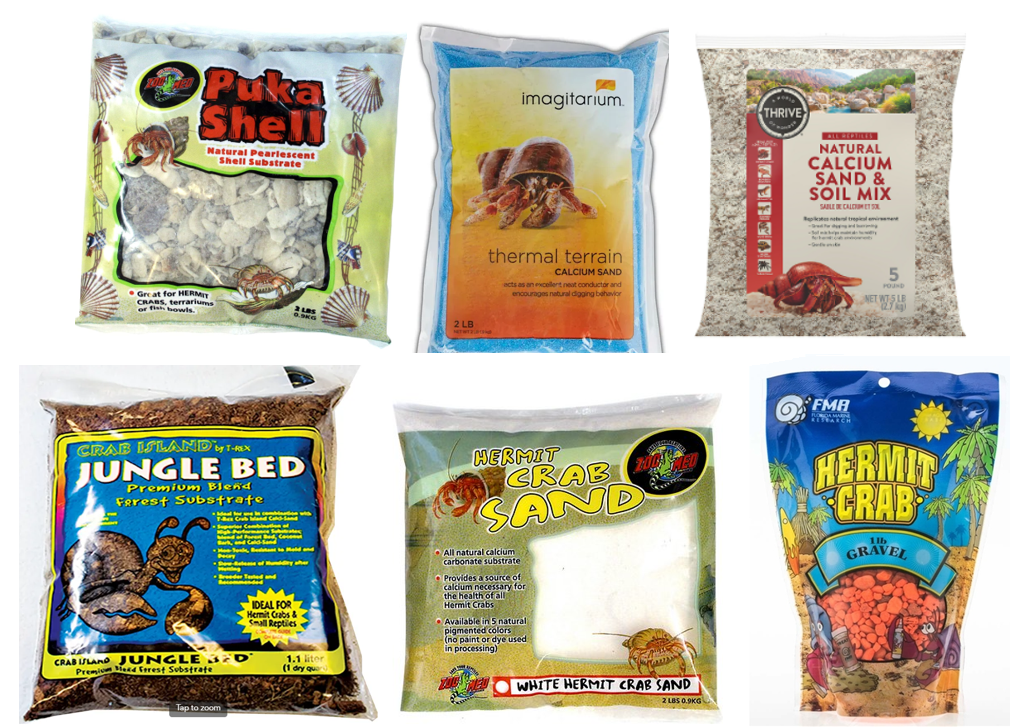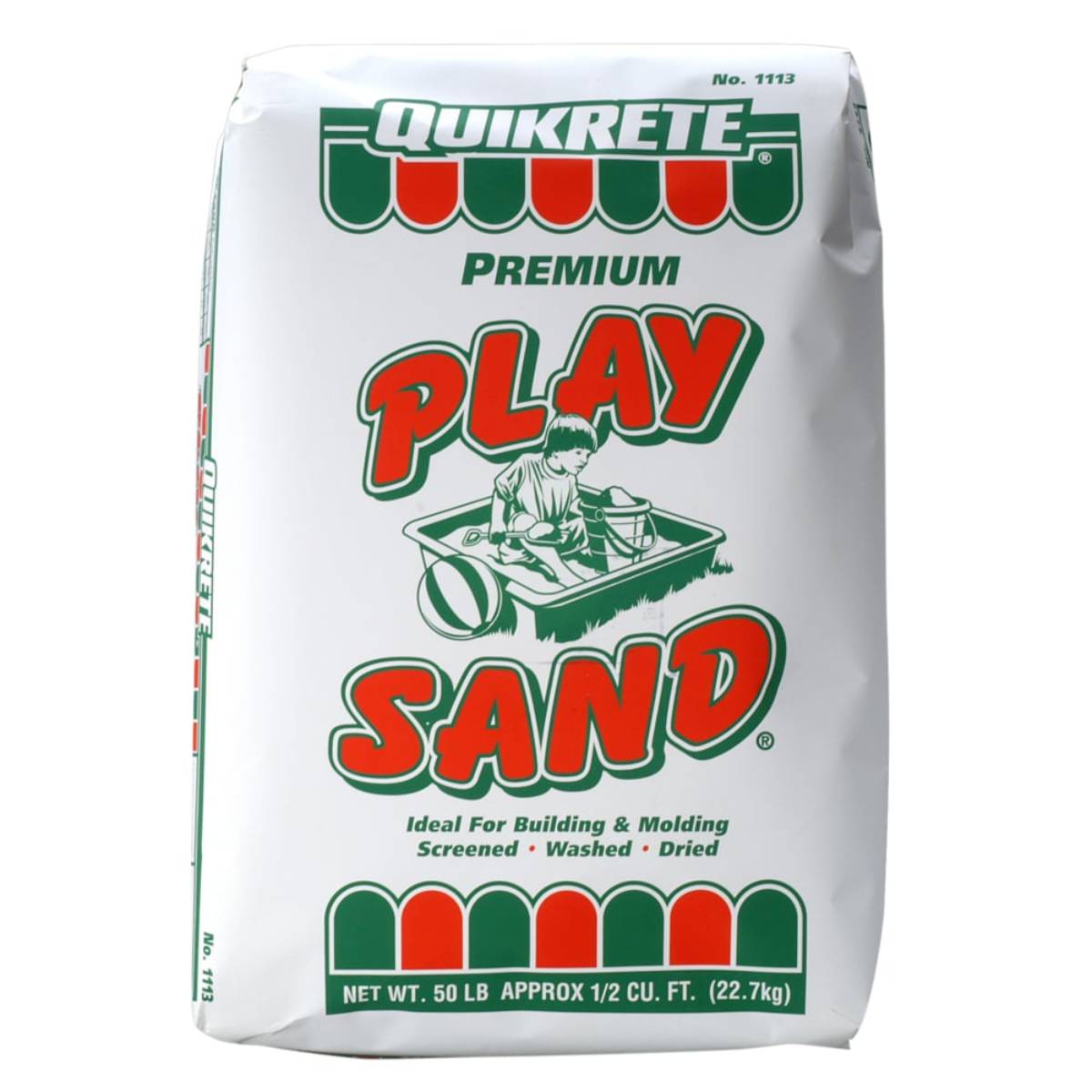Josh's Frogs
Safe Substrate Options for Hermit Crabs
Historically, many substrate options have been advertised for hermit crabs that are actually detrimental for their health, such as colored sand, calcium carbonate sand, gravel, shells, and cypress wood. This has led many hermit crab owners to question the safety of products labeled for hermit crab use. Thankfully, a few commercial mixes and homemade options are safe for hermit crabs.
 Unsafe Hermit Crab substrates
Unsafe Hermit Crab substrates
Fluker's Hermit Crab Sand Substrate (6lbs)
 Fluker's Hermit Beach
Fluker's Hermit Beach
Fluker’s Hermit Beach Sand is a “premium blend of natural sand, coconut fiber, calcium carbonate, sea salt mix, and probiotics.” Unlike calcium sand, which is 100% calcium carbonate, this substrate is primarily natural sand with only some calcium carbonate mixed in. Calcium carbonate is not bad for hermit crabs. They need a source of calcium, which can be supplied in powdered calcium carbonate form. However, when pure calcium carbonate is used as a sole substrate, it can cause issues. Calcium carbonate clumps when wet and hardens like cement when it dries, potentially sticking to the crab or even trapping it.
One thing to note about this mix is its salt content. There are concerns that salt can burn molting hermit crabs, but this is only a danger for homemade substrates. It's possible to add more salt than intended in a homemade substrate, creating an unnaturally high salinity. Fluker's Hermit Crab Sand Substrate does not have this issue, and its salt content is safe for hermit crabs. However, it is not safe for live plants or clean-up crews (isopods and springtails).
Josh’s Frogs has measured this substrate’s pH to be between 6 and 7, which is neutral.
5:1 Play Sand and Coco Fiber
 A safe brand of play sand
A safe brand of play sand
The most common homemade hermit crab substrate is five parts children’s play sand to one part coco fiber. This roughly equates to one 50lb bag of sand to one half of an 8qt coco brick. This mix is often compared to a sandcastle since it holds its shape well for burrowing.
We recommend hydrating coco fiber with freshwater, not saltwater, as it can be easy to overdose and difficult to monitor the salinity level in the future. Unless specified, many brands of coco fiber already contain salt due to the origin of the product.
This substrate is great for tight budgets and artificial foliage. The only drawback is having to go to a garden center and bring home a 50lb bag of sand. Some play sands are rockier than others, so check the quality before investing in multiple bags. Some garden centers also keep their sand outside where it becomes wet, so it should be dried before you use it.
Josh’s Frog’s tested the pH of this mixture and found it to be between 5.5 and 6.1, depending on the sample taken.
Josh’s Frogs BioBedding HERMIT CRAB Bioactive Substrate
 Biobedding Hermit Crab 4qt
Biobedding Hermit Crab 4qt
BioBedding Hermit Crab was made to support isopods, springtails, and plants while still being safe for hermit crabs. It went through 6 months of testing before being released for sale. We found it to maintain humidity well, support a thriving clean-up crew, and grow plants that enjoy sandy soils. It is made of Quikrete play sand, leaf compost, coral pieces, coco fiber, peat moss, fine sphagnum moss, trace elements, and minerals.
There are some concerns about using peat moss with hermit crabs, mainly due to acidity. Its pH is 3 to 4.5, which is very acidic. While not suitable as a sole substrate or as a replacement for sphagnum moss in moss pits, we have not found it to affect molting hermit crabs in BioBedding Hermit Crab. See it in our YouTube video here.
We tested the overall pH to be between 5.5 and 6.1, similar to the 5:1 play sand and coco fiber mix.
Conclusion
Unsafe hermit crab substrates can cause poor molts, surface molts, broken limbs, and even death. Fortunately, all of the above options are safe for hermit crabs. Choosing the right one for you depends on your budget and whether you want to add live plants to your tank. If you are currently using a substrate on the unsafe list, we suggest switching as soon as you can be sure your crabs aren't molting. don't attempt to replace the substrate if your crabs are buried, since they could be molting and it isn't safe to disturb molting hermit crabs.
We hope you find this article helpful, and we wish all the best for you and your hermit crabs!
